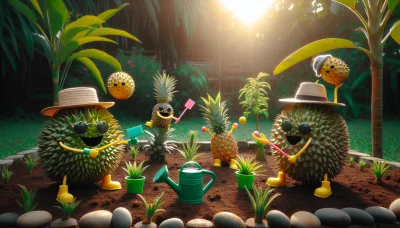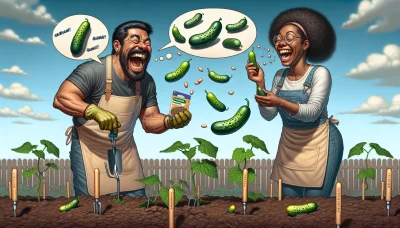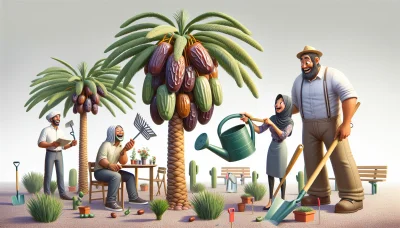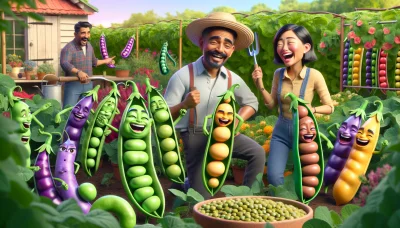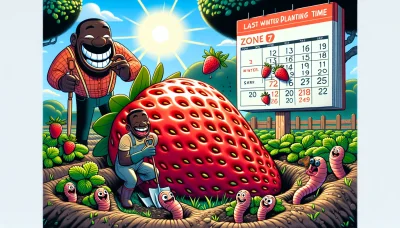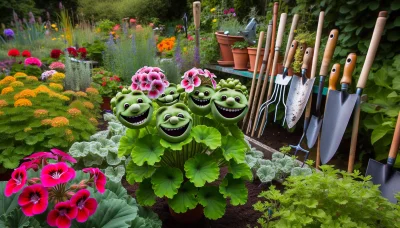The quince tree sun Quiz
Test Your Knowledge
Question of
The Quince Tree Sun: An Introduction
"The Quince Tree Sun" is not just a poetic title but a reference to the unique and often overlooked aspect of gardening that focuses on the cultivation of quince trees. Quince trees, known for their beautiful blossoms and fruit, require specific conditions to thrive, including ample sunlight. This concept symbolizes the meticulous care and patience required in gardening, emphasizing the importance of understanding and respecting the natural needs of plants. In the broader context of gardening, "The Quince Tree Sun" serves as a metaphor for the delicate balance between nature and the gardener's touch, illustrating how the right amount of sunlight, water, and care can bring about a bountiful harvest or a stunning floral display. It highlights the beauty and challenge of gardening, encouraging gardeners to pay close attention to the needs of their plants and to celebrate the unique characteristics of each species they nurture.
Understanding The Quince Tree: Basics and Care
The quince tree, known scientifically as Cydonia oblonga, is a rare gem in the fruit tree world that has been cultivated for thousands of years. Originating from the Caucasus region, its cultivation spread through the Middle East, the Mediterranean, and then to the Americas, adapting well to various climates and soils. This deciduous tree is revered not only for its aromatic, pear-shaped fruits but also for its ornamental beauty, with stunning pink and white blossoms in spring.
Quince trees thrive in temperate climates, requiring a cold period in the winter to produce fruit. They are relatively hardy but prefer well-drained, fertile soil and a sunny position to flourish. Although quinces are more tolerant of wet conditions than most fruit trees, standing water or overly saturated soils can lead to root diseases. Thus, selecting the right site and ensuring proper drainage is crucial for their growth.
When it comes to care, quince trees are relatively low-maintenance but do require some attention to ensure a healthy life and productive fruiting. Regular watering during dry periods, especially in the first few years of growth, helps establish a strong root system. Mulching can aid in retaining soil moisture and suppressing weeds. Pruning is also important, not only to maintain shape and size but to remove any dead or diseased wood and to encourage better air circulation through the canopy, which reduces the risk of fungal diseases.
Fertilization should be approached with care, as over-fertilizing can lead to excessive vegetative growth at the expense of fruit production. A balanced fertilizer applied in early spring is generally sufficient. Pest and disease management is another aspect of quince care, with regular monitoring and prompt action when issues arise being key to preventing serious problems.
In conclusion, while the quince tree may require some specific conditions and care to thrive, the reward of fragrant, delicious fruits and the ornamental beauty of the tree itself make it a worthwhile addition to many gardens. With proper planting, care, and maintenance, quince trees can provide beauty and fruit for many years.
Planting Your Quince Tree: Step-by-Step Guide
- Select the right spot in your garden. Ensure it gets full sun and has well-draining soil.
- Test the soil pH. Quince trees thrive in a pH between 6.0 and 7.0.
- Prepare the planting area. Clear the site of weeds, rocks, and debris. Loosen the soil to a depth of 12-15 inches.
- Dig a hole that is twice as wide and the same depth as the root ball of your quince tree.
- Mix some compost or aged manure into the soil you removed to improve fertility and drainage.
- Remove the quince tree from its container and gently loosen the roots.
- Place the tree in the center of the hole. Ensure that the top of the root ball is level with the surrounding soil surface.
- Backfill the hole with the amended soil, gently tamping down to remove air pockets.
- Water the quince tree deeply to settle the soil around the roots.
- Apply a 2-inch layer of mulch around the base of the tree to retain moisture and suppress weeds. Keep the mulch a few inches away from the trunk.
- Water the tree regularly, especially during dry spells, to establish a strong root system.
Pruning and Maintenance of Quince Trees
Pruning quince trees is a vital part of their maintenance, ensuring they produce quality fruit and maintain a healthy growth. The best time to prune quince trees is during the late winter or early spring before the new growth starts. This timing helps to minimize the risk of disease infection and also allows the tree to heal quickly from pruning cuts.
When pruning, focus on removing any dead or diseased wood first. This is crucial for maintaining the health of the tree. Also, thin out the center of the tree to allow sunlight and air to penetrate, which helps reduce the risk of disease. Remove any crossing branches to prevent damage caused by them rubbing together. Aim to create an open, vase-like shape for your quince tree, which promotes strong growth and makes fruit harvesting easier.
Besides pruning, regular maintenance of quince trees includes watering, fertilizing, and pest control. Ensure your quince tree receives enough water, especially during dry spells, to support its growth and fruit production. Apply a balanced fertilizer in the early spring to provide essential nutrients. Monitor your tree for signs of pests or diseases and take appropriate action promptly to address any issues.
Mulching around the base of the tree can help retain soil moisture, suppress weeds, and provide a slow release of nutrients. Be sure to keep the mulch a few inches away from the trunk to prevent rot. Lastly, thinning the fruit can also be beneficial, as it allows the remaining fruit to grow larger and prevents the branches from being overburdened.
With proper pruning and maintenance, your quince tree will be more productive, healthier, and better able to resist pests and diseases, ensuring a bountiful harvest of delicious fruit.
Pests and Diseases Affecting Quince Trees
Quince trees, while not as common as other fruit trees, can be a delightful addition to a garden. However, they are susceptible to various pests and diseases that can affect their health and productivity. Identifying and managing these issues early is key to ensuring the health of your quince tree.
Common Pests
One of the most common pests affecting quince trees is the Codling Moth. The larvae of this moth burrow into the fruit, causing significant damage. To manage Codling Moth infestations, it is recommended to use pheromone traps to monitor and reduce their population. Additionally, applying neem oil or insecticidal soap can help control these pests.
Aphids are another pest that can be found on quince trees. These small, sap-sucking insects can cause leaves to curl and weaken the tree. Introducing beneficial insects like ladybugs or applying insecticidal soap can help manage aphid populations.
Common Diseases
Fire Blight is a serious bacterial disease that can affect quince trees, characterized by a sudden wilting and blackening of blossoms and branches. To manage Fire Blight, infected branches should be pruned away promptly, and the tools used should be disinfected to prevent the spread of the disease. Avoiding overhead watering can also help reduce the risk of infection.
Quince Leaf Blight is a fungal disease that causes dark spots on leaves, leading to premature leaf drop. Ensuring good air circulation around the tree and removing fallen leaves can help prevent this disease. Fungicidal sprays may also be necessary for severe cases.
By being vigilant and taking prompt action against these pests and diseases, you can help keep your quince tree healthy and productive for many years to come.
Harvesting and Using Quinces
Quinces are a unique fruit that require patience and knowledge to harvest at the right time. They are typically ready in late autumn when they turn a deep yellow and emit a fragrant aroma. Unlike other fruits, quinces are hard and sour when raw, making it difficult to determine ripeness by firmness. A good indicator of readiness is when the fruit easily detaches from the branch with a gentle twist. It's also important to note that quinces may appear blemished, but this does not affect their internal quality or taste.
Once harvested, quinces can be transformed into a variety of delightful dishes. Their high pectin content makes them excellent for jams, jellies, and marmalades, offering a unique flavor profile compared to traditional fruits. Quinces can also be poached or baked, which softens their flesh and brings out their sweet, aromatic qualities. Incorporating them into desserts such as pies, tarts, and crumbles adds a unique twist to classic recipes. Additionally, quinces can complement savory dishes. When cooked slowly with meats or added to stews, they impart a subtle sweetness and depth of flavor that enhances the overall dish. Quinces can also be made into a paste, commonly known as membrillo, which pairs wonderfully with cheese, making it a perfect addition to a charcuterie board.
The Cultural Significance of Quince Trees
The quince tree, with its lush, fragrant fruit, holds a special place in the cultural and historical landscapes of many societies around the world. This tree, scientifically known as Cydonia oblonga, has been a symbol of love, fertility, and immortality, weaving its way through ancient mythology and modern traditions alike. In Greek mythology, the quince was sacred to Aphrodite, the goddess of love and beauty, and it was given as a gift at weddings, believed to bring happiness and fertility to the newlyweds. Similarly, in the Roman world, the quince was associated with Venus, the goddess of love and garden, reinforcing its symbolism in love and marriage.
Beyond its mythological connections, the quince tree has also played a pivotal role in culinary traditions across the globe. Its fruit, often too tart and hard to be eaten raw, is transformed through cooking into delicious jellies, jams, and dishes that grace tables from Europe to the Middle East, marking celebrations and everyday life with its distinctive flavor and aroma.
Moreover, the quince tree's influence extends into the realm of art and gardening, most notably illustrated in the documentary "The Quince Tree Sun." This film beautifully captures the interplay between nature and art, showcasing the quince tree as a source of inspiration and contemplation. It highlights not only the aesthetic beauty of the quince tree but also its ability to connect us to deeper philosophical and artistic explorations. Through the lens of the film, the quince tree transcends its physical presence, becoming a metaphor for the creative process and the passage of time, reminding us of the deep, often overlooked connections between the natural world and human creativity.
In essence, the quince tree serves as a bridge across cultures, time, and disciplines, from ancient myths to modern kitchens, and from the garden to the canvas. Its enduring presence in our gardens and stories is a testament to its rich cultural significance and its ability to inspire, nourish, and connect us across different spheres of life.



